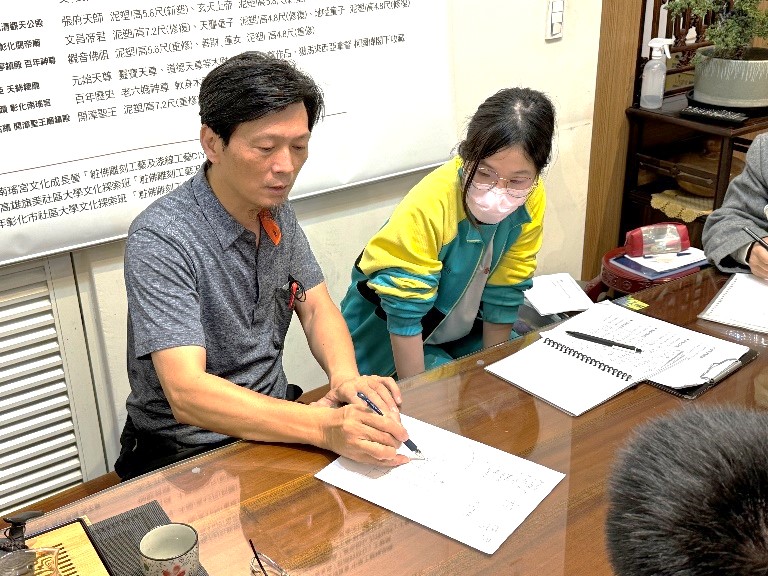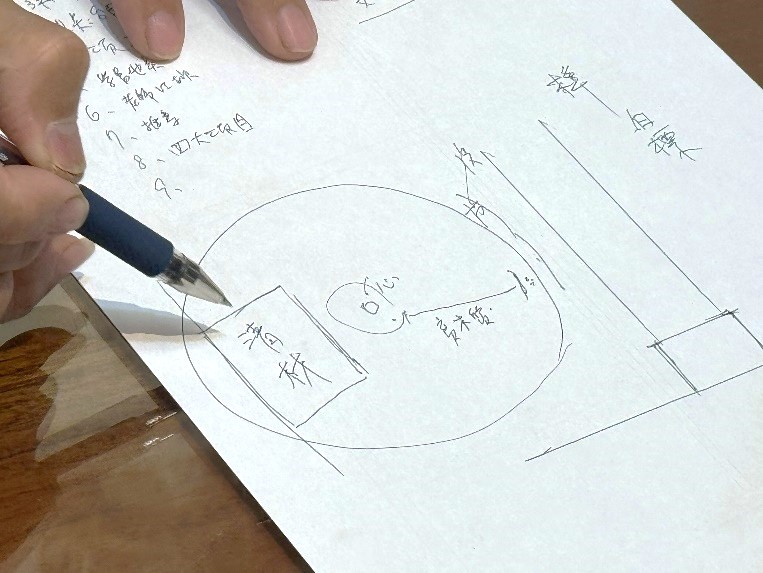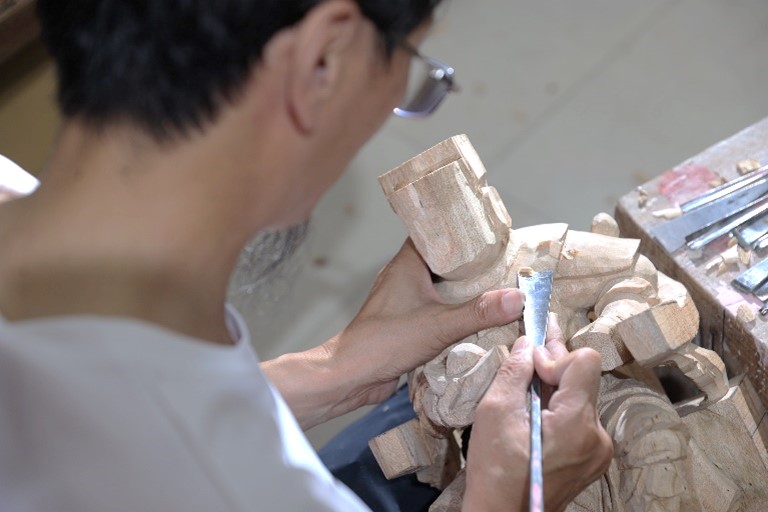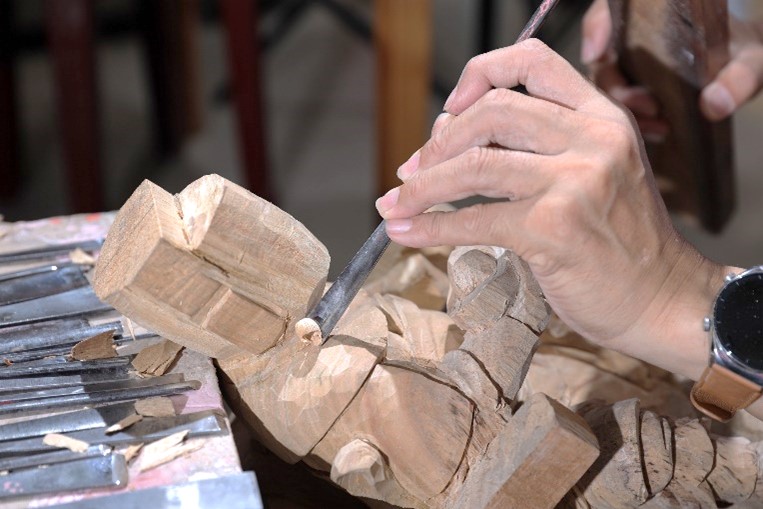
Materials
The materials for carving statues are not limited to wood, paper carvings, wood carvings, clay sculptures, and composite materials are all used. Master A-fa specializes in wood carving and clay sculpture. Wooden statues are the current mainstream. Clay statues are more fragile than wood and should not be moved frequently. Clay statues are usually made by statue sprucing masters on site to reduce damage.
Wooden statues of gods are generally made of camphor wood. In the early days, camphor wood was mostly obtained locally. Later, with the enforcement of regulations, such as wood bans and conservation. Currently, camphor wood is usually imported from Southeast Asian and other countries whose wood materials are similar to those in Taiwan.
The preservation of wood is also very laborious, especially after wood is cut into squares for making statues. When the weather is cold, the wood must be covered with quilts, and when the weather is hot, the wood must be wrapped in plastic bags. During preservation, the environment must not be overheated, and measures must be taken according to the weather to prevent water vapor and oil vapor in the wood from escaping and causing drying and cracking damage. In addition, it is also important to ensure that the wood does not become moldy. In cold weather, special attention should be paid to the moisture content of the wood. Master A-fa said that preserving wood is like taking care of a child. Such careful care will take at least two years before the wood will be stable. It takes two years to dry out at most one or two inches of the surface layer of the wood. It will take at least ten years for the middle of the wood to dry out. Only statues carved from stable wood can survive hundreds of years without being damaged easily. Therefore, in Master A-fa’s storage room, the wood has to be “preserved” for at least two years, and some have even preserved there for 10 or more than 20 years!
Moreover, the selection of wood is also very important. Master A-fa usually chooses camphor wood that is more than a hundred years old, because after deducting the white part of the tree that is easy to be eaten by insects, the easily rotten core, and the unusable bark, the remaining beautiful wood layer is not enough to make a statue of god if the tree is not more than a hundred years old. Camphor wood is divided into Cinnamomum camphora and Cinnamomum kanehirae. Currently, it is prohibited to cut down Cinnamomum kanehirae in Taiwan. Cinnamomum camphora from high mountains is also rare. Therefore, most of the wood used in statue sprucing is imported from abroad.
Master A-fa was once commissioned with repairing a statue of a god that was made of improper materials. The statue was purchased only seven or eight years ago, and the wood had already been damaged. The cause was “rotten core.” The core of the tree is at the center of the statue. The core of the tree is particularly susceptible to rot. Even if a statue seems to be in good condition when purchased, a statue with rotten core will begin to rot the next year and soon require repairs.
Master A-fa will collect the wood chips produced during the carving process. Some people will ask for them and put them in their homes to make them smell like wood. For more precious woods, such as Cinnamomum kanehirae, which is currently banned from logging, customers usually take wood chips back because these wood chips are said to have the effect of warding off evil spirits.
Among the materials used in statue sprucing, Master A-fa said that “lacquer thread” has many advantages. Not only can it be made more detailed, but it can also be dyed with pigments to the desired color. In addition, the protective layer of lacquer thread soil is long-lasting and not easily damaged, so the price is slightly higher. Lacquer thread is also a technique that can be used to fulfill creativity. It is used in a wide range of applications. For example, plates, vases, wood and even mobile phone cases can be designed using lacquer thread, which can be extended to a variety of cultural and creative products in the future. The creation of lacquer thread is also a good business opportunity.
The mineral paint used in statue sprucing is made from fine powder ground from natural stones and various other minerals. It is more durable, more natural and lasts longer than ordinary commercial paints.
Master A-fa taught us a lot of knowledge about wood:


Even the carved wood chips give off the fragrant scent of wood.


.png)

